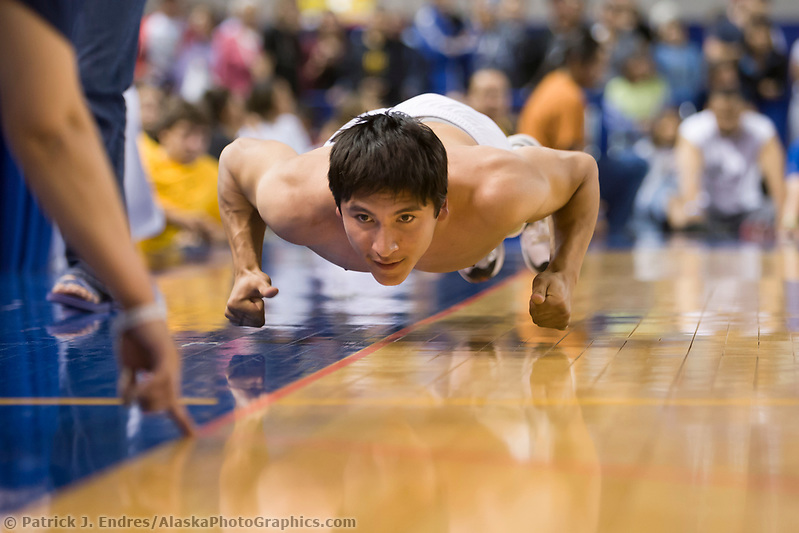Fairbanks Alaska Photos
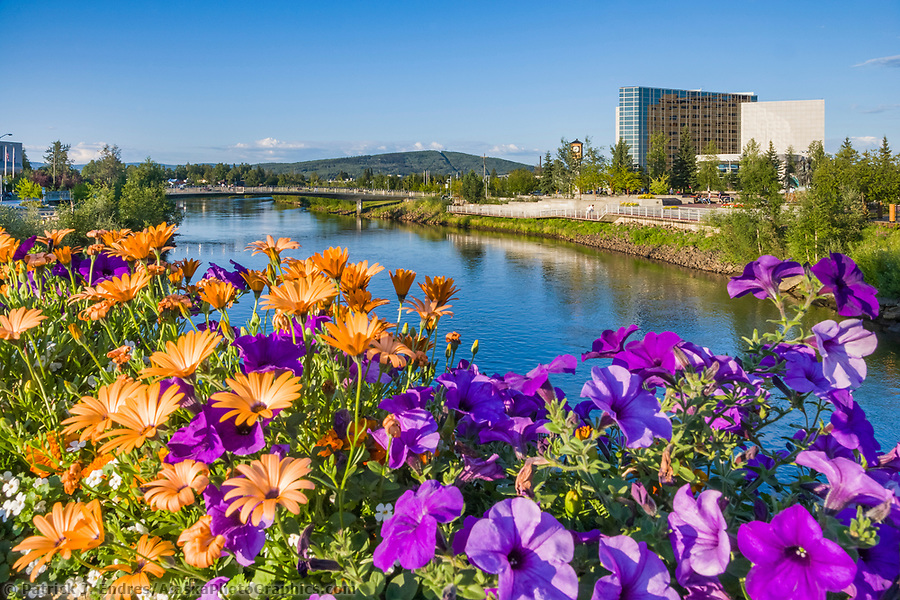
Flowers flourish under the endless daylight of Fairbanks summers, overlooking the Chena River, Rabinowitz courthouse, and Golden Heart Plaza in downtown Fairbanks, Alaska. (Patrick J. Endres / AlaskaPhotoGraphics.com)
The Golden Heart City
As a long-time resident of what we call The Golden Heart City, I’ve gathered many Fairbanks, Alaska photos that illustrate some unique aspects of living in the North. I’ve embedded links throughout the text that will take you to related image galleries or photo searches. All of the photos you see here are available to license for commercial use in publications or purchase as fine art prints for your home or office.
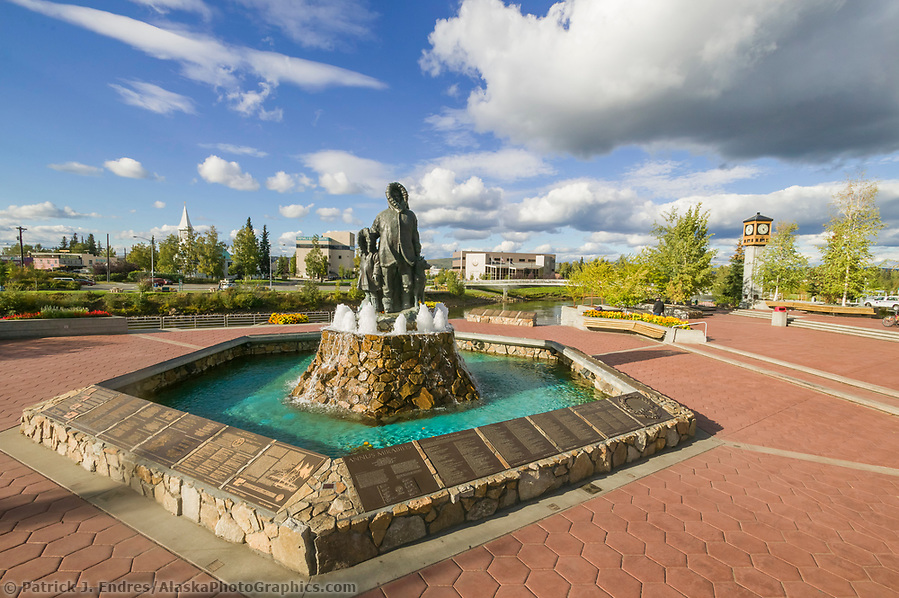
First Family Statue in Golden Heart Park, downtown Fairbanks, Alaska, along the Chena River. (Patrick J Endres / AlaskaPhotoGraphics.com)
Welcome to Fairbanks, Alaska
Due to its northern location at 64.837N degrees latitude, Fairbanks is a land of extremes. Life is a little unique for the residents that have learned how to live in a remote northern location with frigid temperatures. At a relatively low elevation of 400 ft., the Chena River transects the town of 32,000 residents, which rises to 82,000 when including the surrounding Fairbanks North Star Borough. Warmth and light fill the summers, and cold and dark define the winters.
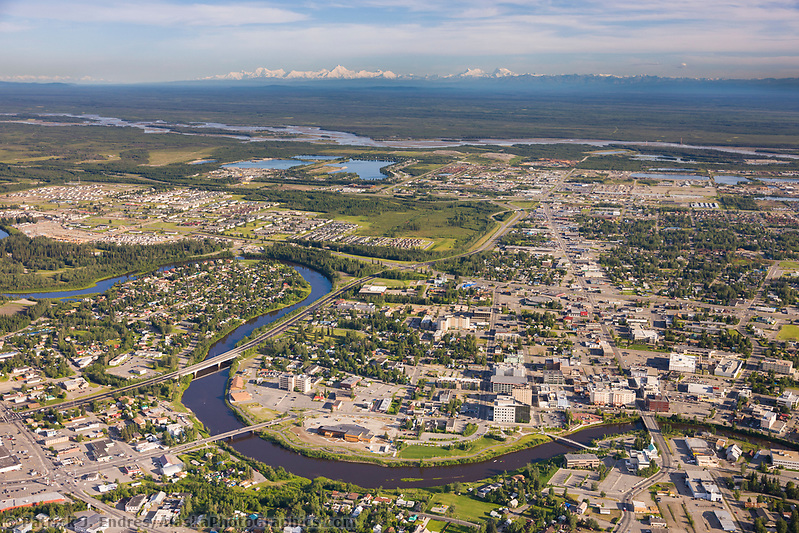
Aerial view of the Chena river winding through the city of Fairbanks and the Tanana River to the south of town, Alaska Range mountains on the distant horizon. (Patrick J. Endres / AlaskaPhotoGraphics.com)
Gold and Fairbanks
In 1901 when the riverboat taking E.T. Barnette up the Chena River could proceed no further, Barnette and his supplies were left on shore. This misfortune turned into an opportunity a year later, in 1902, when Felix Pedro discovered gold on a creek a few miles north of Fairbanks. This launched a gold fever stampede, and Barnette’s small trading post grew into a town. Within five years, Fairbanks was the largest and busiest city in Alaska. From the 1920s to the 1950s, prospectors, and sluice boxes were followed by substantial gold dredges that mined Fairbanks’ valleys and creek beds. The claims around Fairbanks ultimately produced more gold than the strikes in Dawson or Nome.
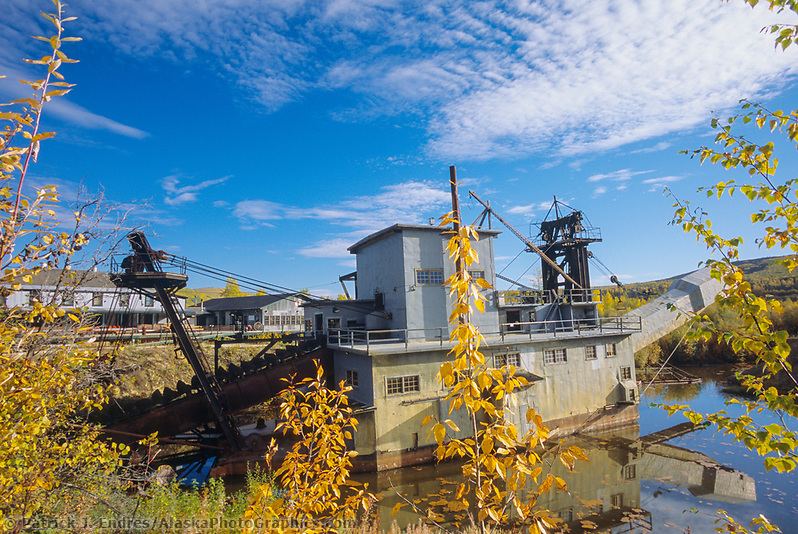
Gold Dredge #8, relic gold mining dredge in Fox, near Fairbanks, Alaska (Patrick J. Endres / AlaskaPhotoGraphics.com)
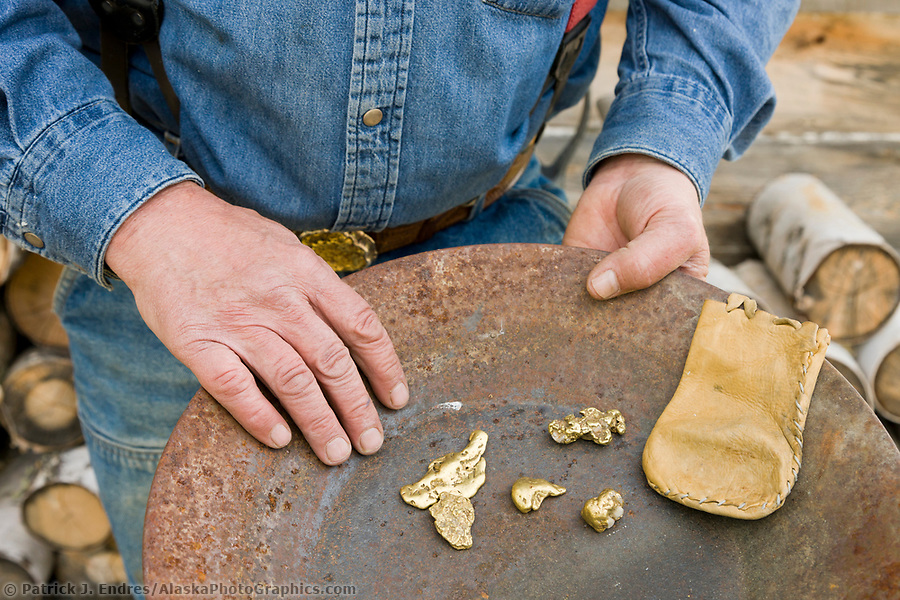
Gold nuggets, Fox, Alaska (Patrick J. Endres / AlaskaPhotoGraphics.com)
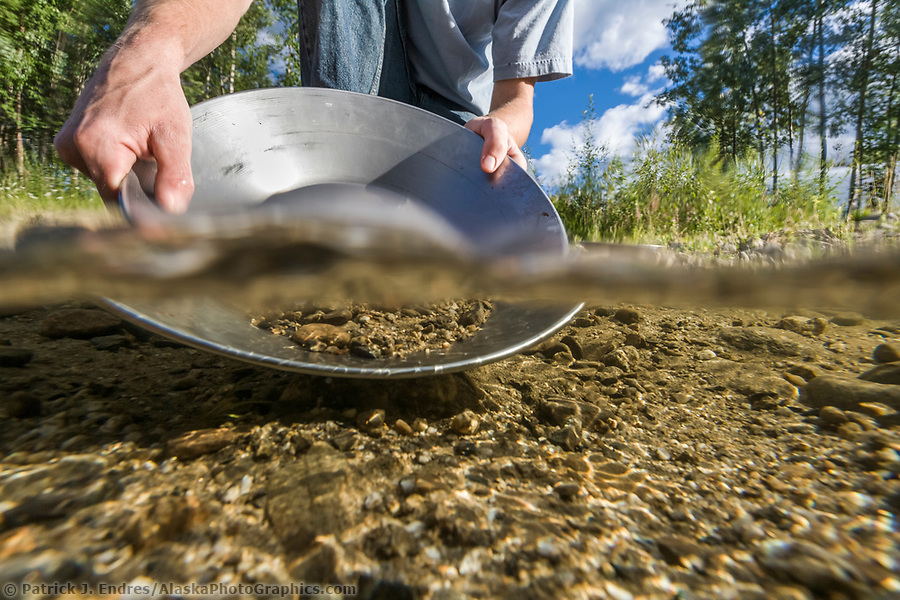
Panning for gold in the crystal clear water of Monument Creek, Interior, Alaska. (Patrick J. Endres / AlaskaPhotoGraphics.com)
The Riverboat Discovery
With its roots in river life and river travel, Fairbanks is home to some historic but still functioning paddle wheel boats or sternwheelers. Before roads came to the Interior of Alaska, summer transportation often happened via the network of rivers. Large ships were able to haul supplies throughout a broad complex of waterways, including the Kuskokwim, Tanana, Yukon, and Chena, to name a few. Today, the popular Riverboat Discovery offers tours along the Chena River.
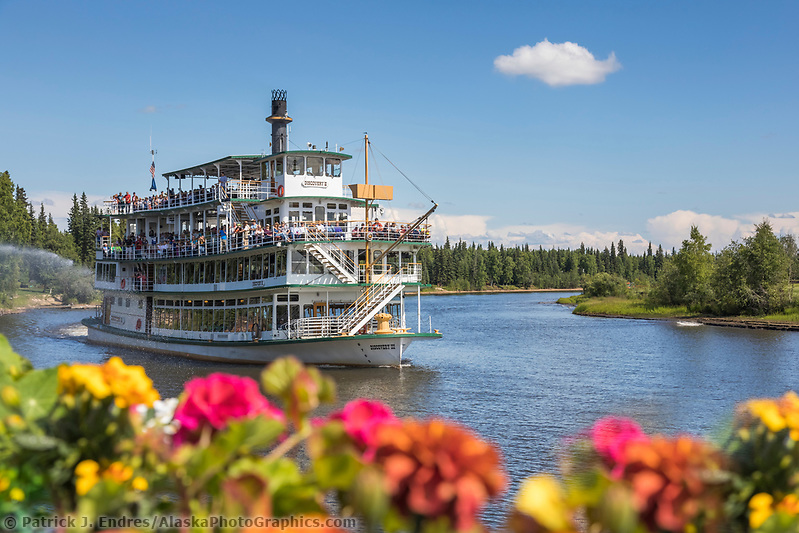
Historic Riverboat Discovery takes tourists down the Chena River in Interior Alaska’s golden heart city of Fairbanks, Alaska (Patrick J Endres / AlaskaPhotoGraphics.com)
World Ice Art Championships
Each March, the World Ice Art Championships occur in Fairbanks, Alaska. Over 1500 tons of ice are harvested for this event. These 7500-pound blocks of ice are then carved into spectacular works of art by local and international carvers alike. Some sculptures reach over 25 feet tall! The event in Fairbanks begins with a single-block competition that consists of more miniature but no less spectacular sculptures. Later the multi-block competition begins, which can often be a mad rush against time, with teams of carvers working together all through the night. For the kids, a play area is constructed with slides, mazes, and spinning chairs, all created from ice.
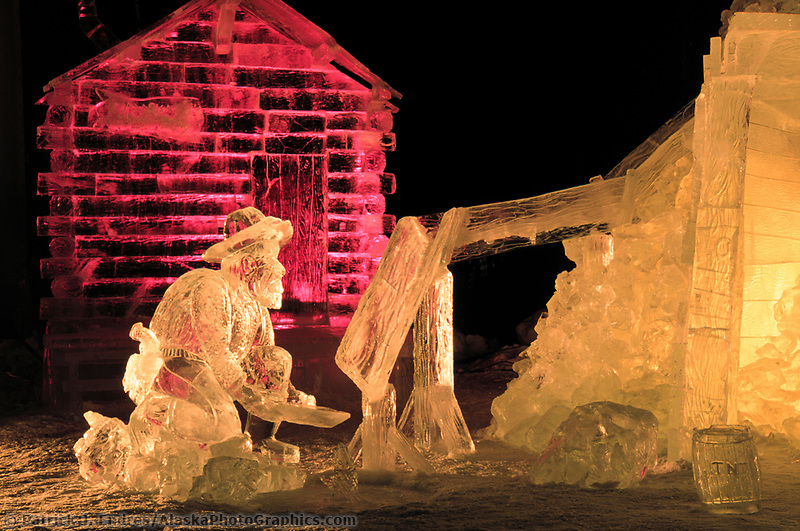
Multi-Block Ice sculpture at the World Ice Art Championships held each march in Fairbanks, Alaska (Patrick J. Endres / AlaskaPhotoGraphics.com)
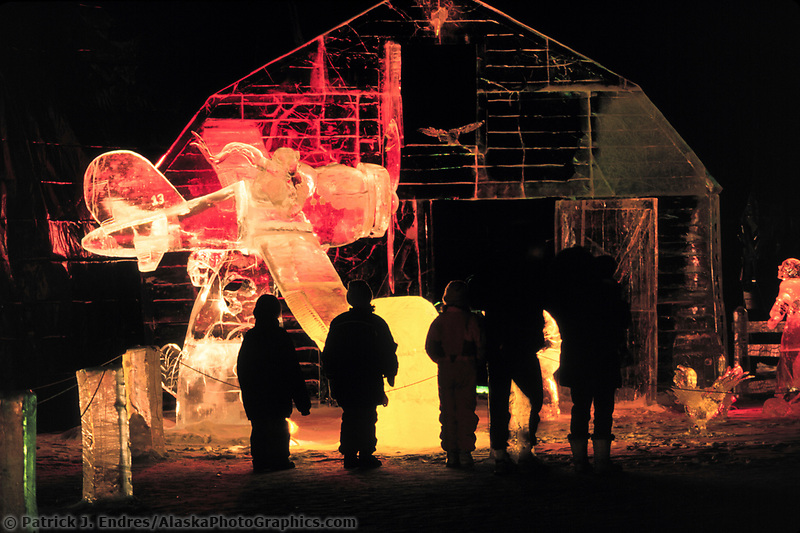
Barnstorming Multi-block ice sculpture at the World Ice Art Championships held each march in Fairbanks, Alaska (Patrick J. Endres / AlaskaPhotoGraphics.com)
The Aurora Borealis: (Northern Lights)
Due to its northern latitude and its position under the Van Allen Belt (also known as the auroral oval), Fairbanks, Alaska, is one world’s top locations for viewing the aurora borealis or northern lights. In Fairbanks, The aurora can be seen an average of 250 nights a year, with the most significant occurrence around the spring and the fall equinoxes. The aurora can be seen in clear skies throughout the dark winter months. The aurora is active nearly every day of the year but cannot be seen in the summer due to the lack of darkness.
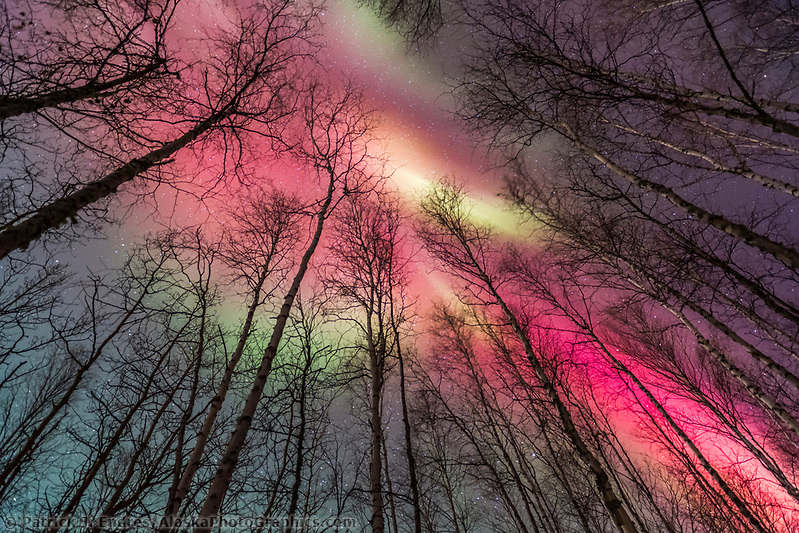
Vibrant red and green aurora borealis above the birch tree forest in Fairbanks, Alaska. (Patrick J Endres / AlaskaPhotoGraphics.com)
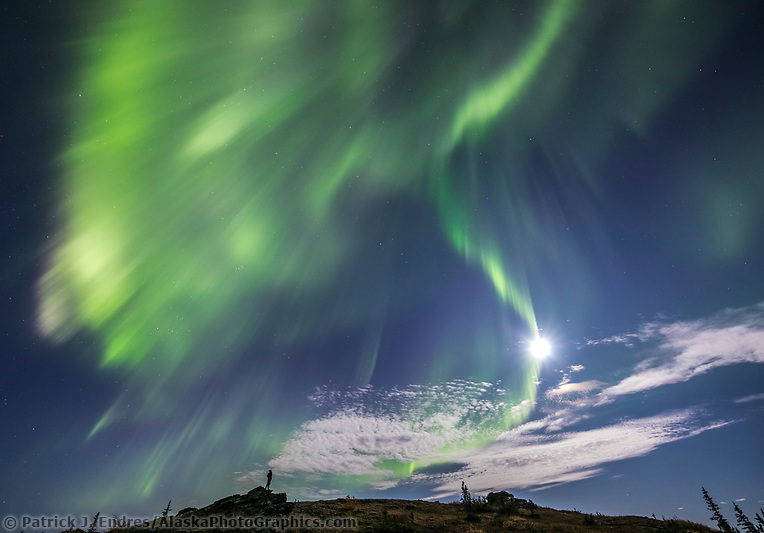
A man watches the aurora borealis, also called the northern lights, swirl over the foothills surrounding Fairbanks, Alaska. (Patrick J Endres / AlaskaPhotoGraphics.com)
The Gateway to the Arctic
Fairbanks is considered the gateway to the Arctic, just a three-hour drive from the Arctic Circle along the Dalton Highway. A popular turnout and campground at the Arctic Circle include a sign to mark the spot where the sun does not set one day a year on December 21 and does not rise one day a year on June 21. These dates are known as the winter and summer solstice. It is a popular photo destination.
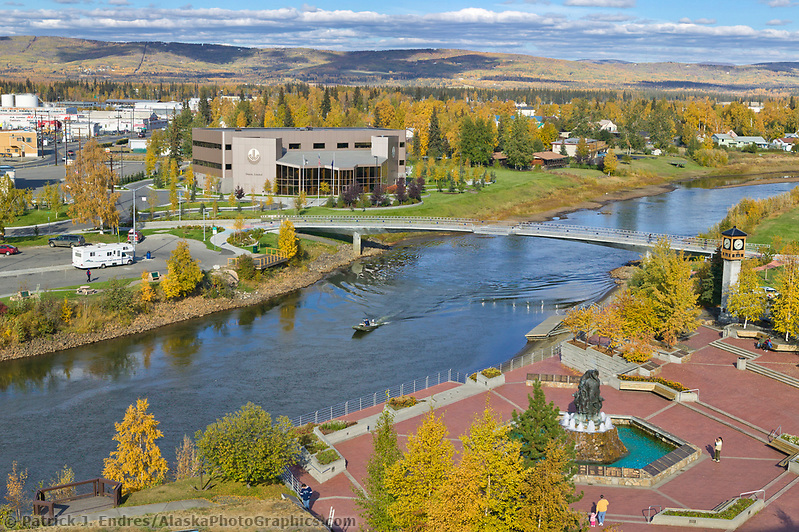
Overview of Chena River, Golden Heart Plaza in downtown Fairbanks, Alaska (Patrick J. Endres / AlaskaPhotoGraphics.com)
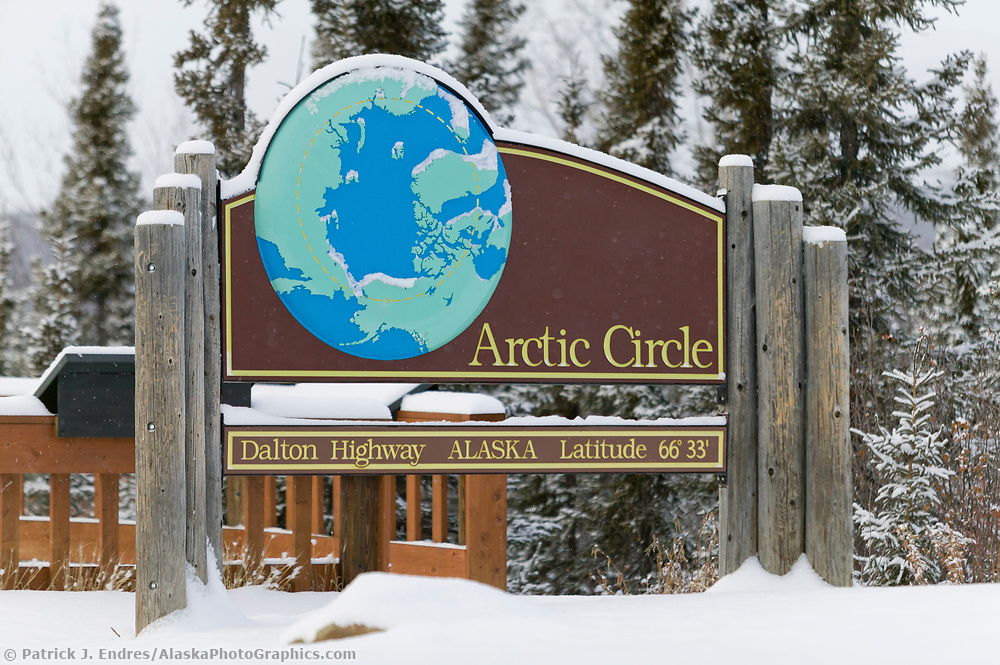
Arctic Circle sign at the rest stop and campground along the Dalton Highway, Alaska (Patrick J. Endres / AlaskaPhotoGraphics.com)
The Yukon Quest
The 1,000-mile Yukon Quest is a unique cross-border sled dog race, running between Whitehorse, Yukon, and Fairbanks, Alaska. Race highlights the special relationships that exist between mushers and their dogs. There is no other race like the Yukon Quest. It is not a staged race but an actual distance race. Mushers cannot replace sleds during the race and cannot have stoves and equipment flown into any of the checkpoints. With distances between checkpoints sometimes over 200 miles, they must carry many supplies. Mushers in the Quest must truly challenge the northern wilderness on their own. The race represents a rare opportunity to see northern working dogs in their element.
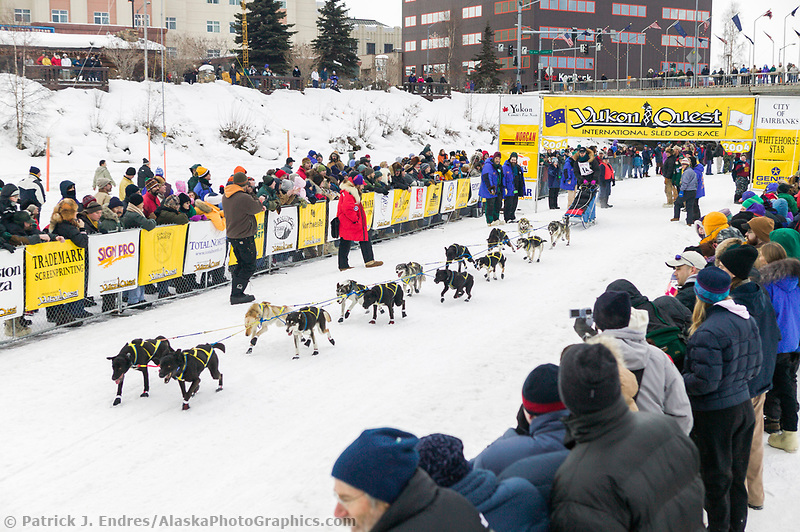
Musher Gerry Willomitzer at the start of the 1000-mile 2004 Yukon Quest in Fairbanks, Alaska (Patrick J. Endres / AlaskaPhotoGraphics.com)
Festival of Native Arts
The Festival of Native Arts unites the major Native culture groups of Alaska and foreign groups of the continental United States and countries such as Japan, Russia, and Canada. These groups share the rich heritage of their respective cultures, which not only solidifies the Alaska Native identity but also educates all people on the nature of cultures different from ours. This tradition began in 1973 when a group of University of Alaska Fairbanks students and faculty (representing a variety of colleges and departments) met to consider a spring festival focused on the artistic expressions of each Alaska Native culture. In less than three months, perhaps for the first time in Alaska, Native artists, craftspeople, and dancers from all significant Native culture groups gathered at UAF to share the University community and Fairbanks’s rich artistic traditions.
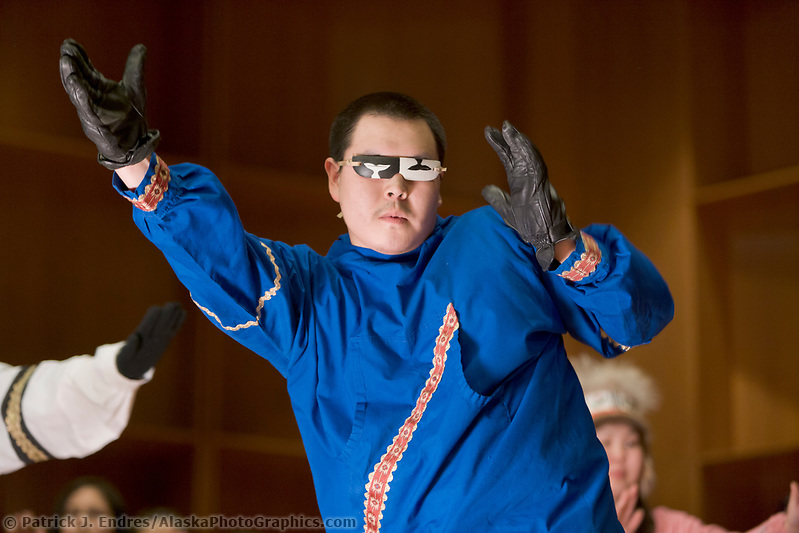
Festival of Native Arts, Native dance and art celebration in Fairbanks, Alaska (Patrick J. Endres / AlaskaPhotoGraphics.com)
University of Alaska Museum of the North
The Museum of the North, located at the University of Alaska Fairbanks, is a central resource center for the public and scholars. The Museum’s mission is to acquire, conserve, investigate, and interpret specimens and collections relating to Alaska’s natural, artistic, and cultural heritage and the Circumpolar North. The Museum serves the state, national, and international science programs through education, research, and public exhibits. The Museum develops and uses botanical, geological, zoological, and cultural collections; these collections form the basis for understanding past and present issues unique to the North and meeting future challenges.
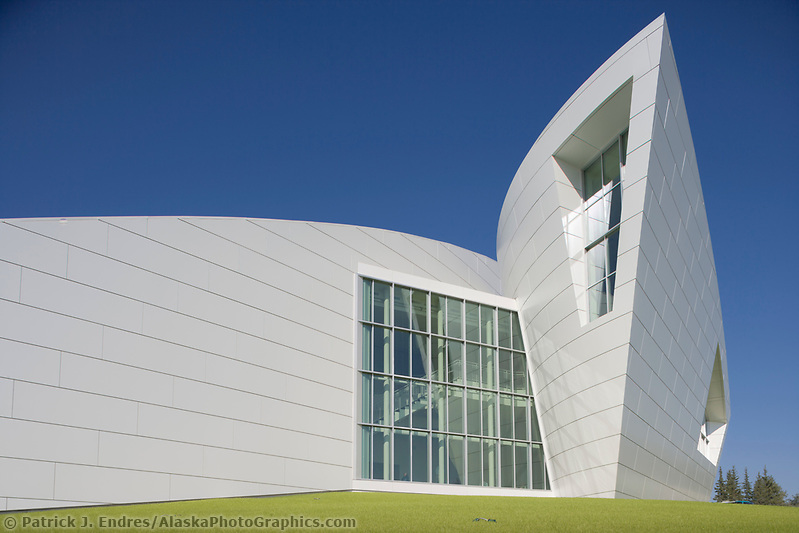
University of Alaska Museum of the North in the final stages of construction, Fairbanks, Alaska (Patrick J. Endres / AlaskaPhotoGraphics.com)
The Midnight Sun Baseball Game
The Alaska Goldpanners semi-pro baseball team hosts The Midnight Sun Baseball game at the Growden Memorial Park, which starts at 10:30 pm and usually finishes at about 1:30 am. The event is held on the summer solstice (June 21), the longest day of the year when darkness never reaches the Fairbanks skies. The game has quite a history, dating back to 1906 for the first one.
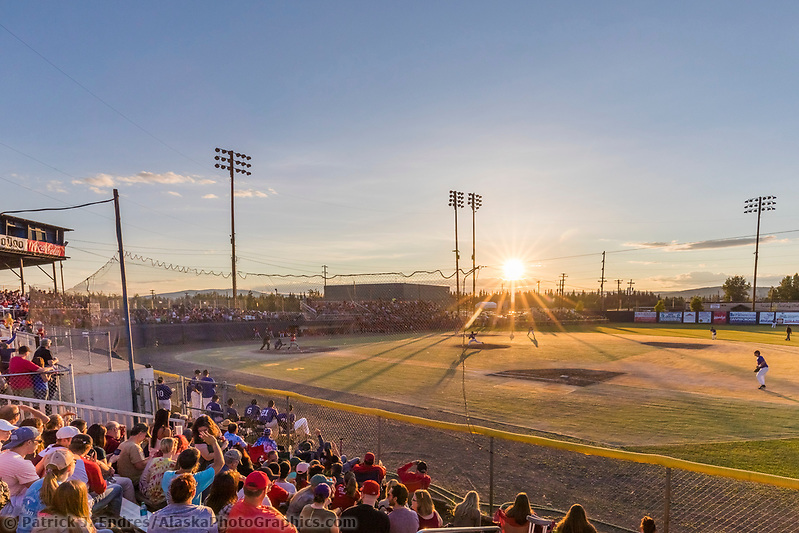
The Fairbanks Goldpanners play the San Diego Waves in 2017 June 21, Midnight Sun baseball game in Fairbanks, Alaska. (Patrick J Endres / AlaskaPhotoGraphics.com)
World Eskimo Indian Olympics
Fairbanks hosts The World Eskimo Indian Olympics annually on the third weekend in July. WEIO was designed to honor and encourage the preservation of cultural traditions critical to life and survival in the circumpolar North. The games featured at the event have roots in hunting and survival of the northern first nation peoples like the Inui, Inupiat, and Yupik. Spectators can attend the public event and watch the following and more:

